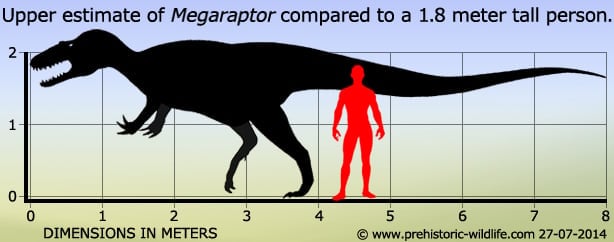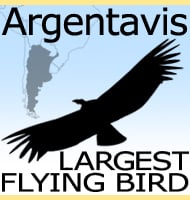In Depth
Megaraptor made headlines at the time of its discovery because of the large thirty centimetre long claw that at the time was thought to be the sickle shaped claw that belonged on the second toe of a dromaeosaurid dinosaur like Velociraptor, but much bigger. However the discovery of a complete forelimb revealed this reconstruction to be a gross error in that the large claws actually belonged on the hands and not the feet.
Afterwards Megaraptor was thought to have been a spinosaurid as the large claws were similar to members of this group such as Baryonx. However it was new dinosaur discoveries in other parts of the world like Australia that led to the realisation that Megaraptor actually belonged to a specialised group of allosaurids, today known as the Megaraptora, a group named after the Megaraptor genus. The large claws on the hands of these generally lightly built theropods may have been additional weapons for attacking prey or even feeding aids to more easily tear up carcasses.
Dinosaurs similar to Megaraptor include Aerosteon, Australovenator, Fukuiraptor, Siats and Orkoraptor.
Further Reading
– Megaraptor namunhuaiquii, gen. et sp. nov., a large-clawed, Late Cretaceous theropod from Patagonia. – Journal of Vertebrate Paleontology 18(1):4-9. – F. E. Novas – 1998. – Phylogenetic status of Megaraptor namunhuaiquii Novas based on a new specimen from Neuqu�n, Patagonia, Argentina. – Ameghiniana 41: 565–575. – J. O. Calvo, J. D. Porfin, C. Veralli, F. E. Novas & F. Poblete – 2007. – Juvenile specimen of Megaraptor (Dinosauria, Theropoda) sheds light about tyrannosauroid radiation. – Cretaceous Research. 51: 35–55. – Juan D. Porfiri, Fernando E. Novas, Jorge O. Calvo, Federico L. Agnol�n, Mart�n D. Ezcurra & Ignacio A. Cerda – 2014.









